Ditapis dengan
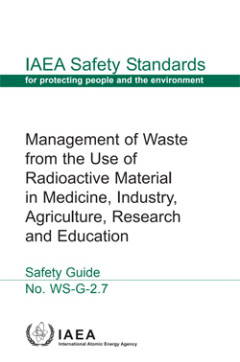
Management of Waste from the Use of Radioactive Material in Medicine, Industr…
This Safety Guide provides recommendations and guidance on the fulfilment of the safety requirements on management of radioactive waste. It covers the roles and responsibilities of different bodies involved in the predisposal management of radioactive waste and in the handling and processing of radioactive material. It is intended for organizations generating and handling radioactive waste or h…
- Edisi
- 2.7
- ISBN/ISSN
- 9201137044 / 1020525X
- Deskripsi Fisik
- 73 p. : Illus. ; 24 cm
- Judul Seri
- Safety Standards Series No. WS-G-2.7
- No. Panggil
- 333.7 IAE M
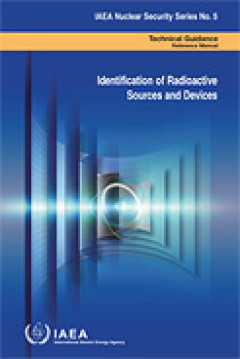
Identification of Radioactive Sources and Devices | IAEA Nuclear Security Ser…
This manual has been produced as part of the IAEA’s Action Plan for the Safety of Radiation Sources and Security of Radioactive Material. It is intended to: assist in the recognition and identification of objects thought to be radioactive devices, sources and transport packages; provide instruction on what to do and how to obtain further help; enhance awareness of the existence of radioactive…
- Edisi
- -
- ISBN/ISSN
- 9201114060 / 18169317
- Deskripsi Fisik
- 138 p.:4.62MB
- Judul Seri
- Nuclear Security Series No. 5
- No. Panggil
- 363.17991 IAE I
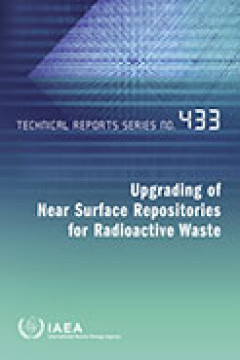
Upgrading of Near Surface Repositories for Radioactive Waste | Technical Repo…
This report considers a variety of circumstances that may require corrective actions to be assessed or implemented at near surface disposal facilities. The circumstances leading to the corrective actions, or the corrective actions themselves, may be of either a technical or a non-technical nature. Methodologies that can be employed to implement effective solutions to problems are discussed, inc…
- Edisi
- 433
- ISBN/ISSN
- 92-0-112704-9
- Deskripsi Fisik
- 137 p. : Illus. 24 cm
- Judul Seri
- Technical Reports Series No. 433
- No. Panggil
- 621.4838 IAE U
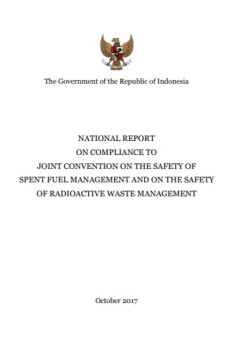
National Report on Compliance to Joint Convention on The Safety of Spent Fuel…
This is the third National Report by the Republic of Indonesia. As reported in previous National Report and Review Meeting, the decision of the Government of the Republic of Indonesia to ratify “the Joint Convention on the Safety of Spent Fuel Management and on the Safety of Radioactive Waste Management”, as ratified by the President Regulation No. 84/2010 on 28 December 2010, clearly demon…
- Edisi
- -
- ISBN/ISSN
- -
- Deskripsi Fisik
- 37p;Illus
- Judul Seri
- -
- No. Panggil
- 363.6
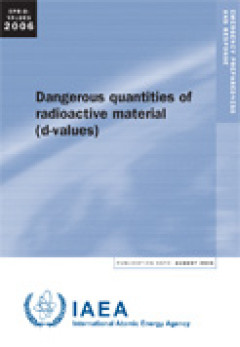
Dangerous quantities of radioactive material (D-values)
A D value is the quantity of radioactive material which is considered a dangerous source. A dangerous source is one that, if uncontrolled, could result in death or a permanent injury which decreases that person’s quality of life. Various IAEA documents concerning emergency preparedness and safety and security of radioactive sources list D values for a limited set of radionuclides. This docume…
- Edisi
- -
- ISBN/ISSN
- -
- Deskripsi Fisik
- 154p
- Judul Seri
- -
- No. Panggil
- 541 IAE D
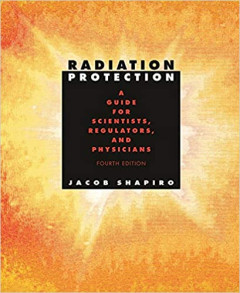
Radiation Protection: A Guide for Scientists, Regulators, and Physicians, Fou…
This highly successful manual has served for nearly three decades as the definitive guide to the safe use of radioactive materials. Completely revised and updated, the fourth edition presents a new dimension by adding coverage of nonionizing radiation, and is thus concerned with the entire field of radiation protection. The author takes the novel approach of introducing the whole range of en…
- Edisi
- -
- ISBN/ISSN
- 0674007409
- Deskripsi Fisik
- xxiv, 663 p. : Illus. ; 24 cm
- Judul Seri
- -
- No. Panggil
- 616 SHA r
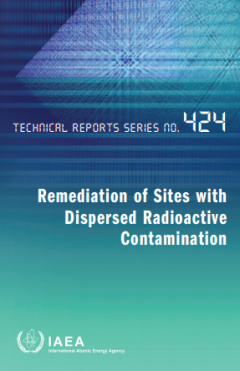
TRS No.424 Remediation of Sites with dispersed Radioactive Contamination
The term ‘remediation’ is used in this report to encompass all activities leading to reduced exposure to radiation and to an improved environmental and/or economic value of a site; it does not necessarily imply restoration to a pristine environmental state. The terms ‘rehabilitation’ and ‘restoration’ are often used interchangeably. In the context of this report remediation is taken…
- Edisi
- -
- ISBN/ISSN
- 92–0–114603–5
- Deskripsi Fisik
- 125 hal
- Judul Seri
- -
- No. Panggil
- 363.179907 IAE R
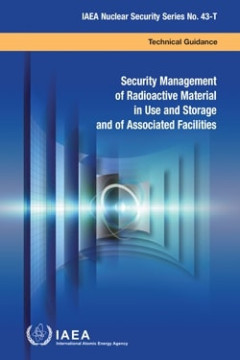
Security Management of Radioactive Material in Use and Storage and of Associa…
The IAEA Nuclear Security Series provides international consensus guidance on all aspects of nuclear security to support States as they work to fulfil their responsibility for nuclear security. The IAEA establishes and maintains this guidance as part of its central role in providing nuclear security related international support and coordination. The IAEA Nuclear Security Series was launched in…
- Edisi
- -
- ISBN/ISSN
- 978–92–0–118321–7
- Deskripsi Fisik
- 68 p
- Judul Seri
- IAEA nuclear security series
- No. Panggil
- 620.267:343.852 IAE s
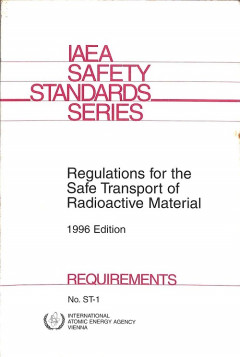
Regulations for the Safe Transport of Radioactive Materials, 1996 Edition, Re…
This publication, Safety Standards Series No. TS-R-1, is an updated version of Safety Standards Series No. ST-1, which was a revised version of Safety Series No. 6 superseding all previous edition. It also includes the revision of Safety Series No. 80, Schedules of Requirements for the Transport of Specified Types of Radioactive Material Consignments (As Amended in 1990). These Regulations, fir…
- Edisi
- -
- ISBN/ISSN
- -
- Deskripsi Fisik
- - p. : illus. ; 21 cm
- Judul Seri
- Safety Standards Series No. ST-1
- No. Panggil
- 615.8406 IAE R
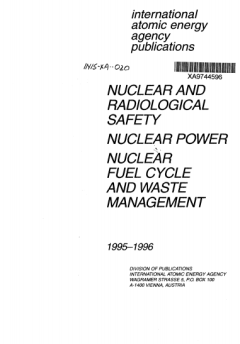
Nuclear and Radiological Safety, Nuclear Power, Nuclear Fuel Cycle and Waste …
This catalogue lists all sales publications of the International Atomic Energy Agency dealing with Nuclear and Radiological Safety, Nuclear Power and Nuclear Fuel Cycle and Waste Management and issued during the period of 1995-1996. Most publications are in English. Proceedings of conferences, symposia and panels of experts may contain some papers in languages other than English (Arabic, Chines…
- Edisi
- -
- ISBN/ISSN
- -
- Deskripsi Fisik
- -
- Judul Seri
- -
- No. Panggil
- 333.7924 IAE N
 Karya Umum
Karya Umum  Filsafat
Filsafat  Agama
Agama  Ilmu-ilmu Sosial
Ilmu-ilmu Sosial  Bahasa
Bahasa  Ilmu-ilmu Murni
Ilmu-ilmu Murni  Ilmu-ilmu Terapan
Ilmu-ilmu Terapan  Kesenian, Hiburan, dan Olahraga
Kesenian, Hiburan, dan Olahraga  Kesusastraan
Kesusastraan  Geografi dan Sejarah
Geografi dan Sejarah